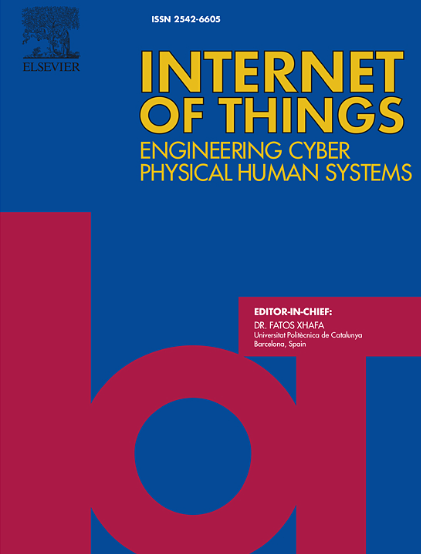基于强化学习的移动LoRa设备可重构节能传输策略
IF 6
3区 计算机科学
Q1 COMPUTER SCIENCE, INFORMATION SYSTEMS
引用次数: 0
摘要
LoRa是一种用于低功耗和远程物联网(IoT)网络的无线通信技术。虽然它最初不是为移动物联网设备设计的,但它的适用性已经迅速扩展到支持移动性。其网络协议LoRaWAN包括自适应数据速率(ADR)机制,以最大限度地减少能耗,同时优化数据速率和Time-on-Air值。然而,ADR难以有效适应高度动态和不可预测的环境,导致收敛缓慢和性能下降。这些挑战在信号条件频繁变化的情况下尤其明显,例如具有非视距(NLoS)的城市地区或具有快速信道变化的环境。为了解决这些限制,我们引入了ADRL,这是一种在动态和可变条件下主动选择LoRa设备最合适的传输配置的新型传输机制。为此,提出的方法(i)使用基于轻量级k近邻(KNN)的近似预测终端设备接收到的信号强度,(ii)使用深度强化学习在网络服务器端创建可重构控制器,用于选择传输参数,使能耗最小化,并确保给定的数据包成功解码概率。此外,我们利用占空比信息来最大限度地提高交货率并遵守相关法规。我们将我们的方法与在各种城市环境中使用逼真模拟器的最先进的作品进行比较。结果表明,ADRL有效地平衡了能耗和性能要求,平均能耗降低了15%,数据包发送率提高了57%。本文章由计算机程序翻译,如有差异,请以英文原文为准。
ADRL: A reconfigurable energy-efficient transmission policy for mobile LoRa devices based on reinforcement learning
LoRa is a wireless communication technology for low-power and long-range Internet of Things (IoT) networks. Although it was not initially designed for mobile IoT devices, its applicability has quickly expanded to support mobility. LoRaWAN, its network protocol, includes an Adaptive Data Rate (ADR) mechanism to minimize energy consumption while optimizing data rates and Time-on-Air values. However, ADR struggles to adapt effectively in highly dynamic and unpredictable environments, leading to slow convergence and performance degradation. These challenges are particularly evident in scenarios with frequent changes in signal conditions, such as urban areas with non-line-of-sight (NLoS) or environments with rapid channel variations. To address these limitations, we introduce ADRL, a novel transmission mechanism that proactively selects the most suitable transmission configuration of LoRa devices under dynamic and variable conditions. To this end, the proposed method (i) forecasts the received signal strength of end devices using a lightweight k-nearest neighbors (KNN)-based approximation, and (ii) employs deep reinforcement learning to create a reconfigurable controller on the network server side for selecting the transmission parameters that minimize energy consumption and ensure a given probability of successful packet decoding. Moreover, we leverage duty-cycle information to maximize the delivery ratio and comply with the associated regulations. We compare our method to state-of-the-art works using a realistic simulator in various urban environments. The results show that ADRL effectively balances energy consumption and performance requirements, reducing average energy expenditure by up to 15% and increasing the packet delivery ratio by up to 57%.
求助全文
通过发布文献求助,成功后即可免费获取论文全文。
去求助
来源期刊

Internet of Things
Multiple-
CiteScore
3.60
自引率
5.10%
发文量
115
审稿时长
37 days
期刊介绍:
Internet of Things; Engineering Cyber Physical Human Systems is a comprehensive journal encouraging cross collaboration between researchers, engineers and practitioners in the field of IoT & Cyber Physical Human Systems. The journal offers a unique platform to exchange scientific information on the entire breadth of technology, science, and societal applications of the IoT.
The journal will place a high priority on timely publication, and provide a home for high quality.
Furthermore, IOT is interested in publishing topical Special Issues on any aspect of IOT.
 求助内容:
求助内容: 应助结果提醒方式:
应助结果提醒方式:


